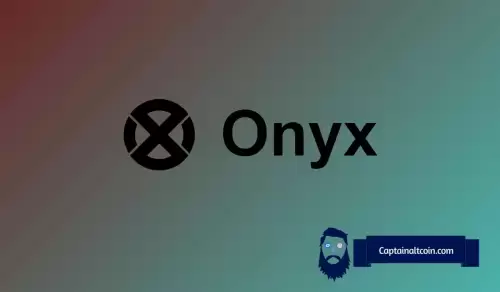 |
|
 |
|
 |
|
 |
|
 |
|
 |
|
 |
|
 |
|
 |
|
 |
|
 |
|
 |
|
 |
|
 |
|
 |
|
Cryptocurrency News Articles
Tether's USDT on Blockchains: Streamlining for Scalability and Regulatory Shifts
Jul 12, 2025 at 10:05 pm
Tether is strategically sunsetting USDT support on older blockchains like Omni, Bitcoin Cash, and Algorand to focus on scalable platforms and navigate evolving regulations.

Tether's USDT on Blockchains: Streamlining for Scalability and Regulatory Shifts
Tether is making big moves in the stablecoin world, streamlining its operations by withdrawing USDT support from several older blockchains. This strategic shift focuses on scalability, developer activity, and navigating the evolving regulatory landscape.
The Great Blockchain Purge: Saying Goodbye to Legacy Networks
As of September 1, 2025, Tether will officially cease USDT redemptions on Algorand, Omni, Bitcoin Cash SLP, EOS, and Kusama. While it sounds dramatic, the writing's been on the wall for a while, with the process quietly starting back in 2023. Think of it as Tether decluttering its digital space to make room for bigger, better things.
The numbers don't lie. These blockchains simply aren't seeing the USDT action they used to. Kusama has less than 250,000 USDT circulating. Bitcoin Cash has under a million. Even Omni, which was the OG USDT transport back in 2014, only has 82 million active tokens, and that number's shrinking. Nostalgia doesn't pay the bills, ya know?
Why the Blockchain Breakup? Scalability and Strategic Focus
Tether's not just being ruthless; they're being strategic. According to Tether, the goal is to focus on platforms offering greater scalability, developer activity, and community engagement. Translation: they're doubling down on Ethereum, Tron, and layer 2s like the Lightning Network – the networks where the party's really happening.
Paolo Ardoino, CEO of Tether, put it best: "Sunsetting support for these legacy chains allows us to focus on platforms that offer greater scalability, developer activity, and community engagement — all key components for driving the next wave of stablecoin adoption."
Regulatory Chess: Playing the Long Game
There's more to this than just tech upgrades. Tether's also playing a complex regulatory game. With stablecoin bills looming in the US and MiCA regulations in Europe, Tether's got to stay ahead of the curve and avoid getting bogged down in regulatory gray areas. Circle's USDC is nipping at their heels, so staying compliant is more important than ever.
Looking Ahead: A Scalable, Compliant Future for USDT
Tether's made it clear: they're all about adapting to the evolving digital asset market. They're seeking new blockchain integrations that offer high scalability and active user bases. This isn't just about keeping USDT relevant; it's about solidifying its position in the increasingly competitive stablecoin arena.
The Bottom Line
So, what does all this mean? Tether's streamlining its operations, ditching the digital dead weight, and focusing on the future. It's a smart move that positions them for long-term success in a rapidly changing crypto landscape. Plus, it frees them up to focus on cool stuff like AI-backed SDKs and Bitcoin mining. And, if you're still holding USDT on one of those soon-to-be-deprecated networks, time to move it! Don't want those tokens getting frozen like a popsicle in January.
In conclusion, Tether's blockchain diet isn't just about cutting carbs; it's about building a leaner, meaner, more scalable stablecoin empire. And who knows, maybe they'll throw a farewell party for Omni. Just kidding... unless?
Disclaimer:info@kdj.com
The information provided is not trading advice. kdj.com does not assume any responsibility for any investments made based on the information provided in this article. Cryptocurrencies are highly volatile and it is highly recommended that you invest with caution after thorough research!
If you believe that the content used on this website infringes your copyright, please contact us immediately (info@kdj.com) and we will delete it promptly.






























































